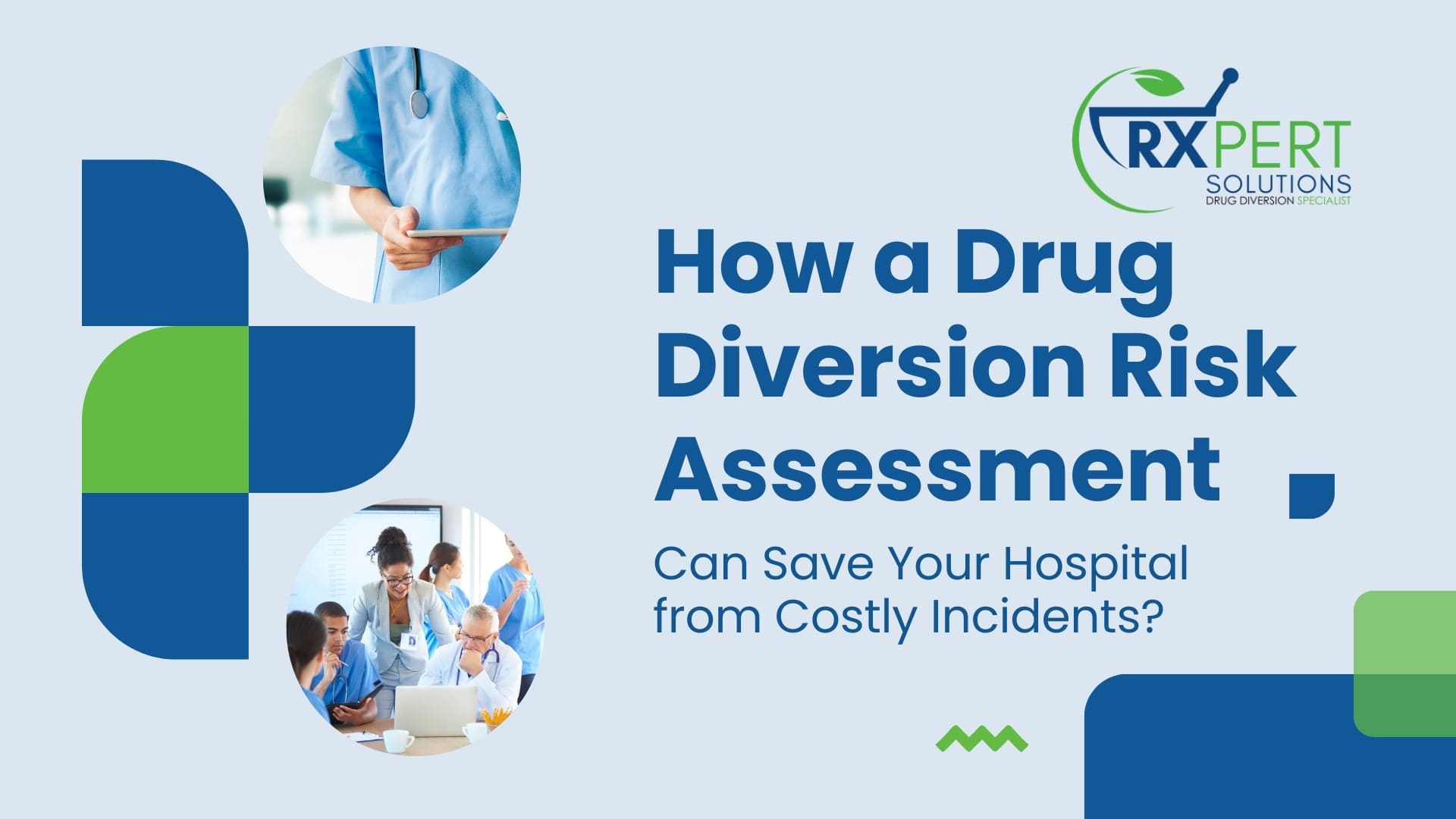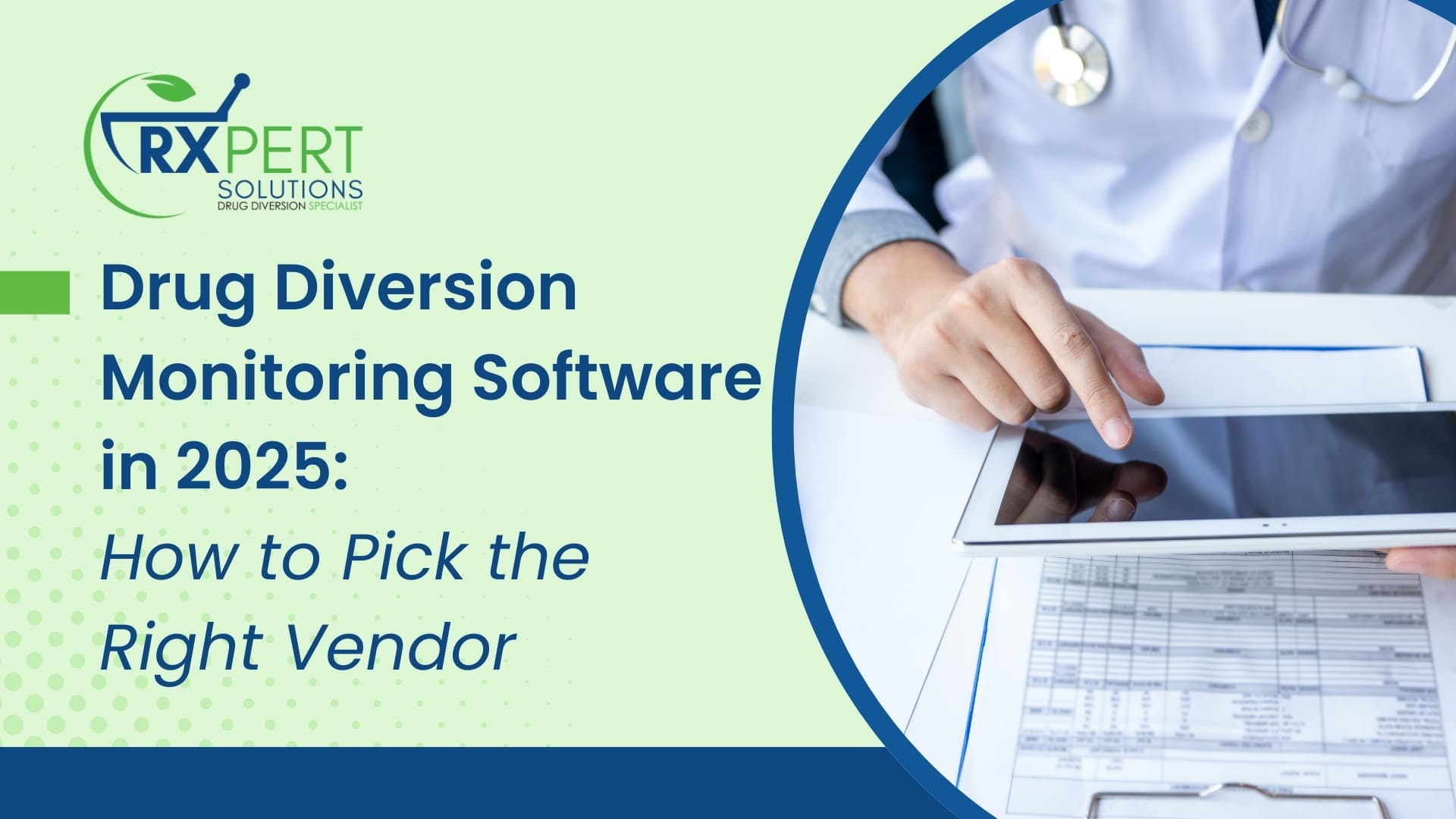Hospitals are under growing pressure to detect and prevent drug diversion. The unauthorized rerouting of controlled substances for personal use, resale, or abuse. Yet for many facilities, a dangerous paradox exists. They believe their fortress is secure, their protocols are the walls, and their staff are the sentinels. But beneath the surface, unseen cracks in the foundation can compromise everything.
Despite having formal compliance protocols in place, the majority of healthcare institutions still suffer from critical gaps in their diversion detection processes. These hidden vulnerabilities can result in massive financial loss, regulatory penalties, and most importantly, patient harm.
What’s the solution?
A proactive drug diversion risk assessment, sometimes referred to as a diversion audit or gap analysis; This is the crucial structural inspection your hospital needs, your main line of defense.
In this blog post, we’ll cover:
- What drug diversion risk assessment actually involves.
- Why internal audits aren’t enough.
- Real-world consequences of missed diversion.
- The Rxpert Solutions method for comprehensive mitigation
- How and when to schedule a risk assessment
Schedule Your Drug Diversion Gap Analysis and uncover the blind spots before they become crises.
What Is a Drug Diversion Risk Assessment?
A drug diversion risk assessment is a comprehensive review of a facility’s policies, systems, personnel behaviors, and audit trails to identify vulnerabilities in diversion prevention.
The terms “audit” and “gap analysis” are often used interchangeably here and both are crucial:
- An audit ensures that your policies are being followed as documented.
- A gap analysis reveals what your policies are missing and where real-world practices fall short; It’s the critical step of finding the hidden cracks so the castle doesn’t start crumbling.
A true risk assessment goes beyond box-checking. It investigates the actual effectiveness of your mitigation strategy and tests for areas that internal teams may overlook.
This type of proactive review allows hospitals to detect issues before diversion occurs and issues surge rendering the foundations away instead of reacting to a collapse when it’s too late.
Why Internal Audits Aren’t Enough
While internal audits are a regulatory requirement, they’re rarely sufficient to detect diversion early. Think of it this way: your team is too close to the foundation to see the subtle cracks. Here’s why:
1. Familiarity Breeds Blind Spots
Your internal compliance and pharmacy teams review the same systems repeatedly. Over time, familiarity can lead to overlooking subtle behavioral patterns that might indicate diversion risk.The routine becomes so ingrained that the signs of trouble simply fade into the background.
2. Confirmation Bias
Internal teams may unintentionally validate that their systems are working as intended — even when deeper flaws exist in documentation, access logs, or behavioral anomalies. The desire to believe the fortress is sound can prevent them from seeing that its defenses are actually flailing.
3. Limited Cross-Departmental Visibility
Diversion doesn’t happen in a vacuum. It often involves multiple touchpoints — from pharmacy to anesthesia to nursing. Only an external audit or gap analysis can effectively trace those handoffs without internal bias. Only an external audit or gap analysis can effectively trace those handoffs without internal bias, following the path of the problem wherever it leads.
What’s at Stake? Real-World Consequences of Undetected Diversion
When drug diversion goes undetected, the fallout can be devastating:
💸 Financial Loss
- The average drug diversion incident costs $70,000+
- Lawsuits from affected patients can drive those costs even higher.
⚠️ Regulatory Risk
- DEA, Joint Commission, and CMS require documented evidence of proactive diversion mitigation.
- A surprise DEA inspection can lead to fines, investigations or license suspensions.
👩⚕️ Patient Safety
- Diverted drugs often result in under-dosing or overdosing of actual patients
- Tampered medications pose direct health risks
📰 Reputation Damage
- News coverage of a drug diversion scandal can shake public trust and damage employee morale
The worst part? Most hospitals only discover diversion after it’s already done damage.
Call Terri at 760‑705‑4078 to discuss your hospital’s risk assessment.
The Rxpert Solutions Approach: Comprehensive & Proven
At Rxpert Solutions, we don’t believe in “checklist audits” Our Drug Diversion Risk Assessment Program combines internal audit review, external gap analysis, and real-world prevention strategies to deliver a full-picture mitigation plan. Our approach is the equivalent of a forensic inspection, designed to protect your facility from the ground up.
Here’s what our 360° process includes:
Internal Audit Analysis
We review your existing policies and audit logs to assess:
- Documentation and compliance consistency
- Gaps in reporting structures
- Incident response protocols
External Gap Analysis
Our specialists bring an outside perspective to uncover:
- Behavioral anomalies in drug access patterns
- Handoffs between departments where oversight drops
- Tech or EMR data gaps that create vulnerabilities
Actionable Diversion Mitigation Plan
You get a step-by-step implementation roadmap, tailored to your facility, with clear priorities to:
- Close compliance gaps
- Fortify access control protocols
- Prepare for DEA and Joint Commission scrutiny
Case Study: Prevention Before Penalty
A 450-bed hospital system partnered with Rxpert Solutions for a proactive risk assessment after noticing small discrepancies in their internal audit reports.
What We Found:
- Medication access logs showed off-hour withdrawals by a single provider
- The facility lacked documentation of external audit standards
- Internal checks were missing handoff validation between pharmacy and anesthesia
What Happened:
- Our team delivered a risk mitigation plan within 14 business days
- The hospital implemented our changes within 45 days
- A potential diversion incident was fully prevented
- The facility passed a surprise DEA audit without issue
Schedule Your Drug Diversion Gap Analysis and uncover the blind spots before they become crises.
When Should You Schedule a Risk Assessment?
Here are signs your facility may be due or overdue for a diversion gap analysis:
- You haven’t conducted an external diversion audit in 12+ months
- Internal audits haven’t changed in 2+ years
- There’s no written gap analysis in your compliance plan
- You’ve had near-miss events or internal concerns raised
- Your team wouldn’t be ready for a DEA inspection tomorrow
In short: if you’re unsure whether your facility is truly diversion-ready… you’re not.
Don’t Wait for a Crisis to Take Action
The best time to audit your diversion prevention program is before a problem emerges. Once diversion occurs, you’re in crisis mode with limited options and high consequences.
📞 Call Terri directly at 760‑705‑4078 to schedule a confidential consultation.
We’ll walk you through what a risk assessment involves and how soon it can be deployed at your facility.
Prefer to start online? Schedule your Drug Diversion Gap Analysis today.
We’ll assess your facility’s needs and provide a custom quote.
Diversion Prevention Isn’t Optional
In today’s healthcare environment, regulators expect prevention, not reaction. Having a documented, proactive diversion risk assessment strategy isn’t just a best practice — it’s essential.
Rxpert Solutions can help you stay ahead of the risk, protect your patients, and meet every audit with confidence.





